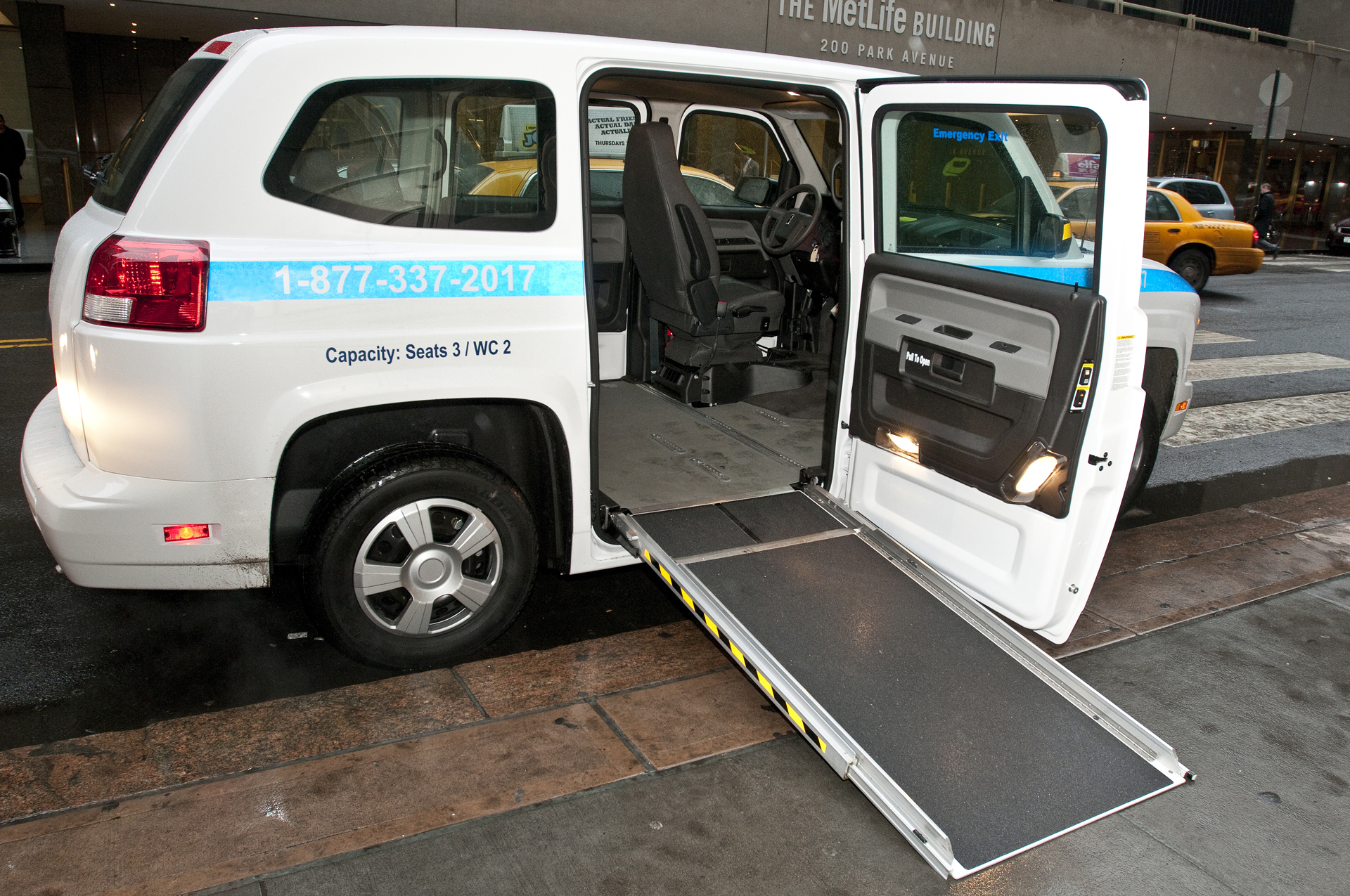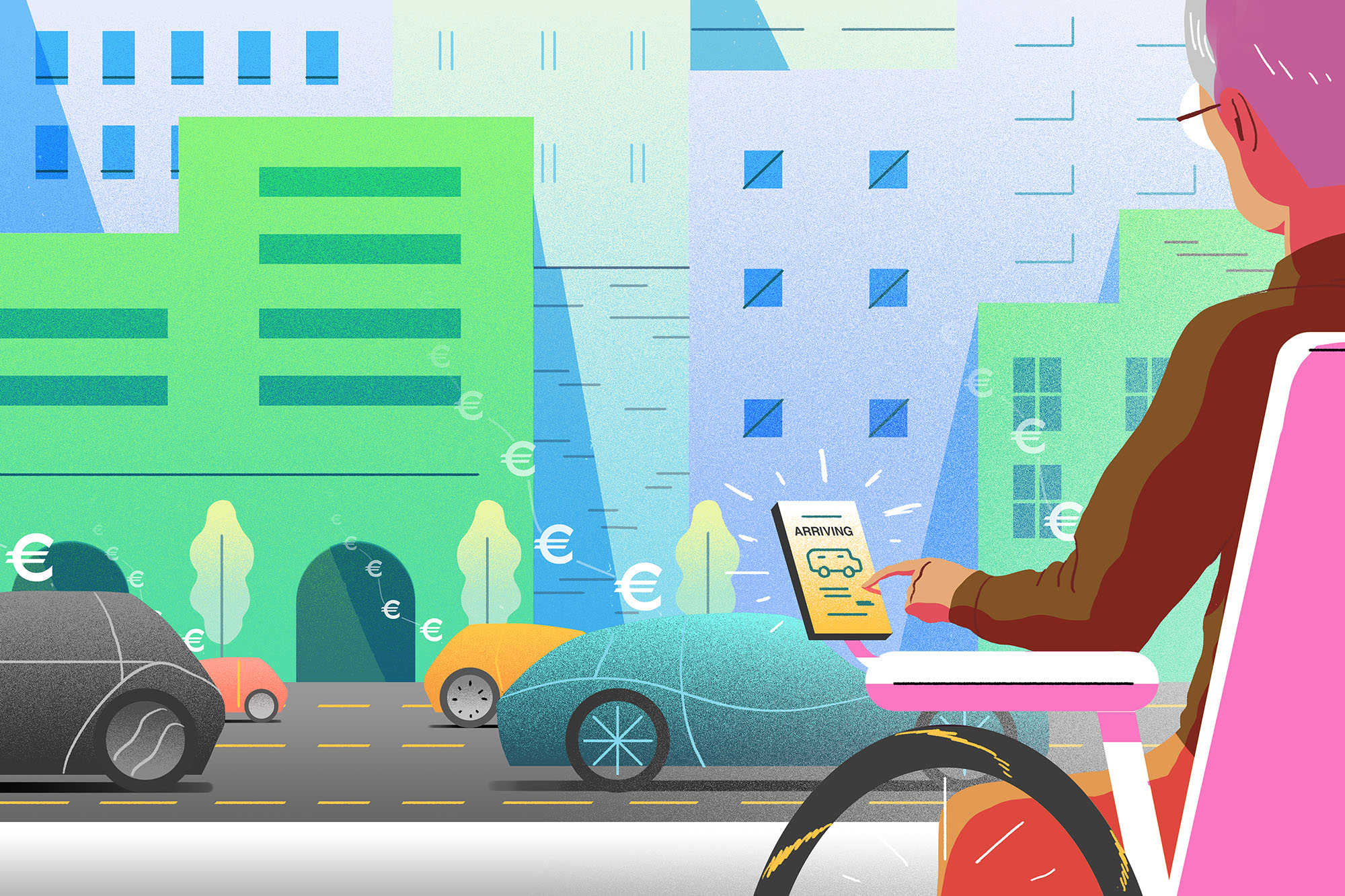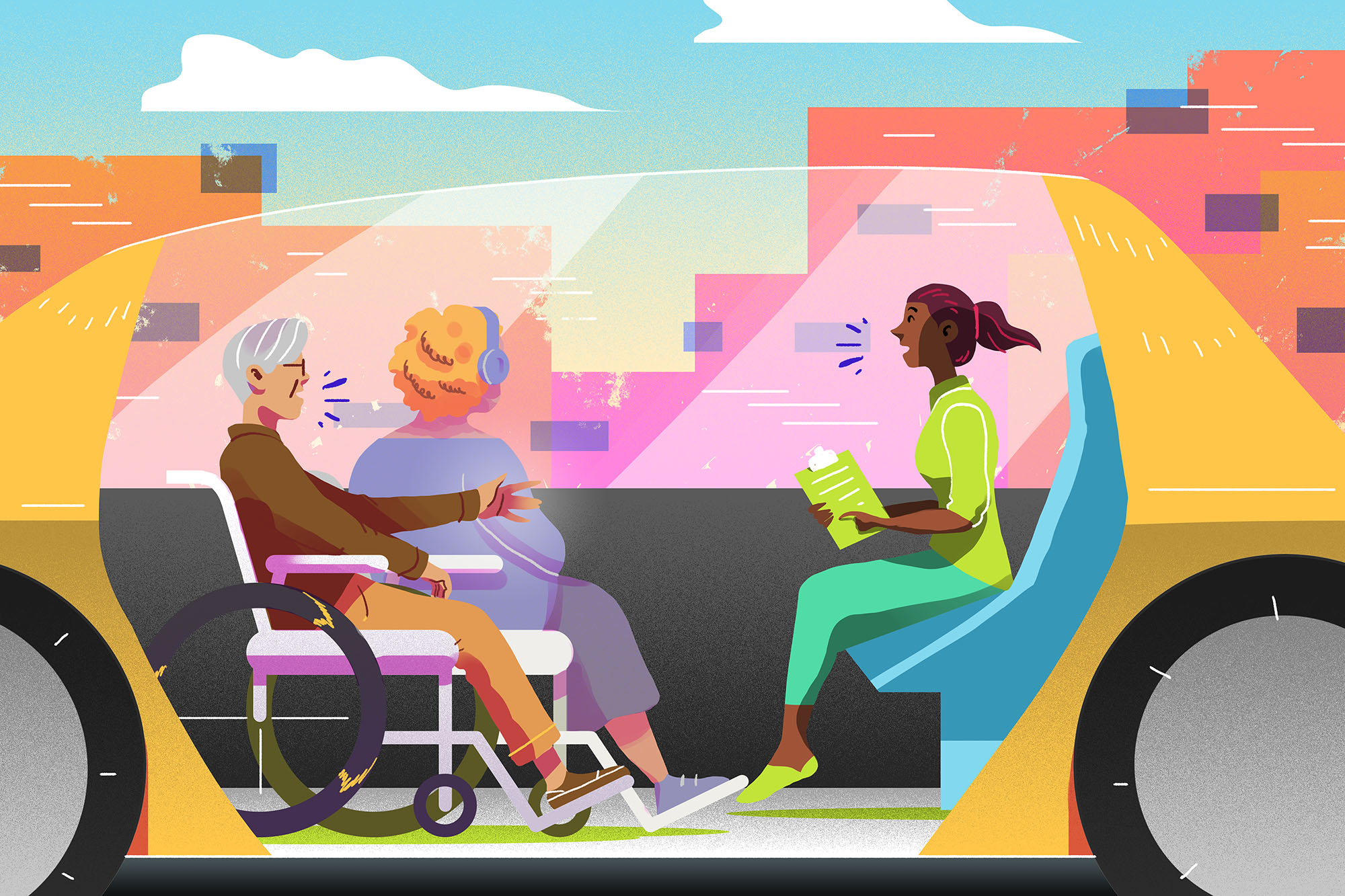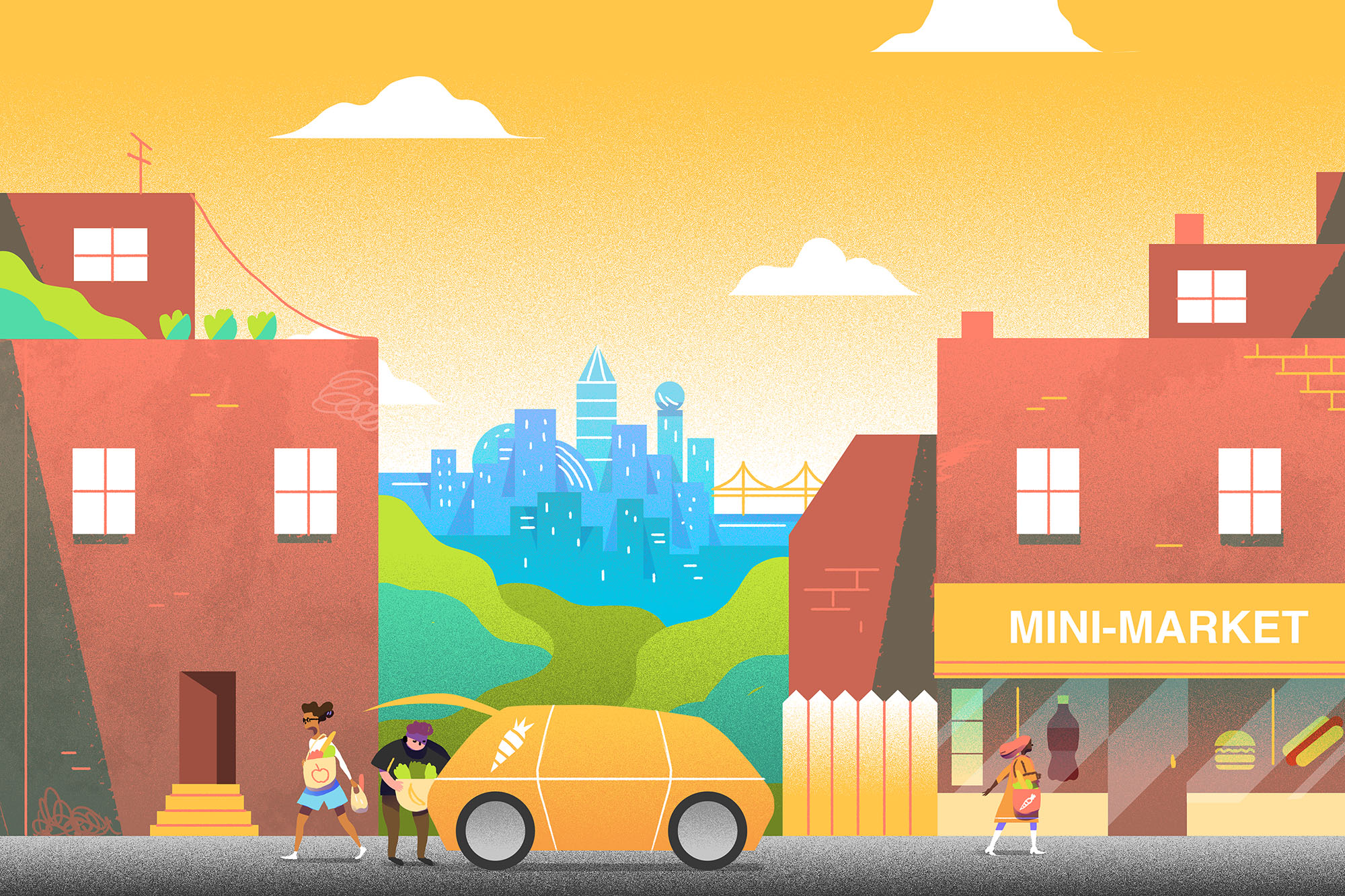Mobility
As ride-for-hire startups lead cities into the driverless revolution, can local governments use them to bring innovation to the underserved?
If you live in a city, your first ride in an autonomous vehicle will almost certainly be in a self-driving taxi. Uber started testing its driverless technology in Pittsburgh in 2016, and in Boston Lyft and Nutonomy launched a ride-for-hire pilot in December 2017. Most automakers, in contrast, don’t plan on selling AVs to the public before 2020.
Both companies are developing self-driving vehicles in the hope of slashing operating costs. But transport planners fear that as those savings are passed on to passengers, the resulting drop in fares could create a street-clogging spike in AV taxi travel.

The economics of automated taxi fleets will allow for far greater specialization and new business models that make it easier to serve special mobility needs, such as this wheelchair-ready taxi from NYC. (Image: Wikimedia Commons)
Today’s Forecast: Robot Jam
Computer simulations of AV taxis’ impacts are only adding to cities’ anxiety. The most comprehensive study, conducted by researchers at the OECD’s International Transport Forum in 2015, looked at four scenarios for Lisbon, Portugal—private and shared AV taxis, with and without a robust public transit network. Even when the dials were turned to transport planners’ ideal settings—shared taxis plus subways—the outcome was perverse. While the overall number of vehicles dropped by 90 percent, the amount of vehicle kilometers traveled actually increased by 6 percent as AV taxis cannibalized both private car travel and bus ridership.
The worst-case scenario modeled by the OECD researchers, of private AV taxis and no public transport, anticipated a takeover of urban transportation by Uber and its competitors. The outcome was nearly double the amount of traffic (89 percent increase). More troubling is that in every alternative future case the study explored, traffic at peak rush hour periods increased.
Fears of robot-powered gridlock are, for now, still the stuff of scientific speculation. But a recent study by the University of California Davis assembles the most compelling evidence yet that Uber and Lyft are adding to traffic congestion in cities. And the AV taxi onslaught may be coming faster than expected. In October 2017, a sudden announcement from Google spinoff Waymo moved up the timetable for self-driving taxis. The company plans to launch a public AV taxi service in the Phoenix area by the end of 2018 using vehicles solely under computer control, dispensing with the human supervisor that’s been a fixture in early tests by competitors Uber, Lyft, and Nutonomy.
Can Technology Fix Paratransit?
Challenge. People need affordable, specialized travel options when they can’t use mass transit.
Electronically-hailed ride-for-hire could explode as automation takes hold. But as cities look to manage disruptive potential growth in these services, they’re also working to make sure that the benefits of improved mobility are shared by all, not just the iPhone toting hipsters who’ve powered their early success.
For instance, in 2016 Massachusetts Governor Charlie Baker announced a pair of unlikely allies in Boston’s struggle to make ride-for-hire services more appealing for the disabled: Uber and Lyft. The leading ride-hailing apps had offered to pick up the slack in the Massachusetts Bay Transportation Authority’s door-to-door van service, the Ride.
During the one-year pilot, eligible passengers would pay only $2 for Uber or Lyft rides, while the MBTA would cover the rest (up to $13). The deal was a win-win for all sides. Customers could order rides at a moment’s notice rather than a day in advance, and each trip cost the MBTA less than a third of the $45 average subsidy for the Ride. The program was an instant hit, and quickly the offer was expanded to all disabled Bostonians. In just five months, 18% of Ride users switched to the more convenient Uber and Lyft option, also saving the agency about $40,000 in the process.

Dial-a-ride services like the Ride are known in public transportation circles as “paratransit,” and are required by federal law. Infamously slow and unreliable, they’re also punishingly expensive for transit agencies to operate. The average trip costs U.S. agencies $29.30, compared to just $8.15 for bus or train trips. The $97 million the MBTA spent on paratransit in its 2015 fiscal year neatly corresponds with its $100 million operating deficit that year. No wonder cities are desperate to offload those trips to someone—and why taxi companies and ride-for-hire services are eager to oblige.
Uber and Lyft hoped to parlay the Boston test into long-term contracts. But the jury is still out on whether they are up to the task. While their Boston pilot is by all accounts a success, in other cities the two companies are accused of cherry-picking passengers. In June, the city of San Francisco subpoenaed their records, alleging the ride-hailing duopoly of neglecting disabled passengers, as well as several neighborhoods. In October, Uber teamed up with New York City’s taxi cartel to fight a proposed expansion of wheelchair-accessible vehicle requirements.
Slideshow:
Automation Fosters Ride-for-Hire Specialization
Automation will slash taxi operating costs, reduce fares, and increase use. Cities could tap this growth to subsidize or invest in innovations that serve a variety of unmet mobility needs.
Illustrations: Nick Iluzada
Swipe to advance the slideshow →




Shaping A More Inclusive Ride-for-Hire Boom
Solution. Create a tax on AV taxis to manage congestion and subsidize services to disadvantaged niches.
All of this begs the question, can cities avert a future of robot traffic jams while also making paratransit more available and useful to people stuck in the stubborn gaps of current transit and taxi services? One possibility may be to start taxing the market-driven expansion of ride-for-hire and using the revenue to subsidize reinvented paratransit.
How would a tax on AV taxis work? Transportation economists point to existing distance- and congestion-based tolling schemes. São Paulo, for example, requires ride-for-hire operators to pay the city an average fee of $.03 per revenue kilometer. Trip origin and destination data is automatically collected by software embedded in drivers’ phones, and the companies are billed weekly.
This new revenue stream could help cities underwrite paratransit not only for the disabled, but also an expanded range of services for the elderly, children, and neighborhoods off the transit grid. Given that typical residents of an American city are only able to access 30% of the available jobs in less than 90 minutes using transit, cities could subsidize fares to transit stations that reduce commute times for low-income breadwinners.
Or, in neighborhoods labeled food deserts, free or discounted trips to grocery stores could provide a short-term solution for increasing access to healthy and affordable food. A similar pilot in Flint, Michigan offers free rides to local medical centers, pharmacies, farmers’ markets, and water distribution points. Pick-ups and drop-offs are logged automatically by the app, which received 33,000 requests in its first year of operation.
The Taxi Business Diversifies
The market for ride-for-hire services is already expanding quickly, and will only grow as driverless vehicles roll in. But automation won’t simply expand access to taxis—it will spur innovations in new services targeted at people with mobility challenges. A fledgling ecosystem of niche ride-for-hire services has already emerged to ferry the elderly (SilverRide; Lift Hero), medical patients (Circulation), and children (HopSkipDrive).

HopSkipDrive emphasizes the security screening, credentials, and personal warmth of its “Caredrivers.” Senior-focused SilverRide promises medically-trained attendants providing door-to-door assistance. If these services used autonomous vehicles, drivers could become skilled attendants, focusing on riders rather than on the road.
AVs will also give these companies, and those that follow, new possibilities to optimize vehicle interiors to those they serve, rather than shoehorning them into today’s cars. For example, Lyft creative director Jesse McMillin has publicly mused about “experience pods” offering mani-pedis—but there’s far more potential for meaningful innovations that improve safety and comfort for the disabled, elderly, and other groups with special needs.

The abundant data AVs throw off is being harvested too, with potential for private profit as well as social impact. For example, the startup Circulation links medical data with Uber and hospitals to ensure patients arrive on time for appointments. Bringing these services to city residents could slash healthcare costs while producing better outcomes. The savings could go back into the subsidy pool for more rides for patients or others in need, forming a virtuous cycle.
A to Z Taxis
City Strategies. Cities can work toward this scenario by radically rethinking AV taxis as a test case for more widespread automated, dynamic road pricing.
As automation allows ride-for-hire companies to differentiate service offerings, one can imagine how iconic taxis in cities around the world might disappear completely, replaced by fleets of every shape and size. Herds of identical taxis could be replaced by smaller, more focused flocks of AVs run either by specialty operators such as HopSkipDrive or as part of the portfolios of larger players such as Uber and Lyft.
Bringing about this future—where a cross-subsidy scheme cultivates a more diverse and equitable ride-for-hire ecosystem—is less a technical challenge for city leaders than a political one. Auto industry lobbyists and motorists’ groups could find common cause to fight a measure that taxes the first AVs to hit city streets en masse, fearing it might be a stalking horse for road pricing on private vehicles as well. To short-circuit such fears, cities will have to demonstrate both the limited scope of these measures and the substantial benefits for underserved groups.
Interested in learning more about how this could take shape in your city? Download our Innovation Brief, which provides detailed information on the challenge, solution, use cases, and implementation strategies.